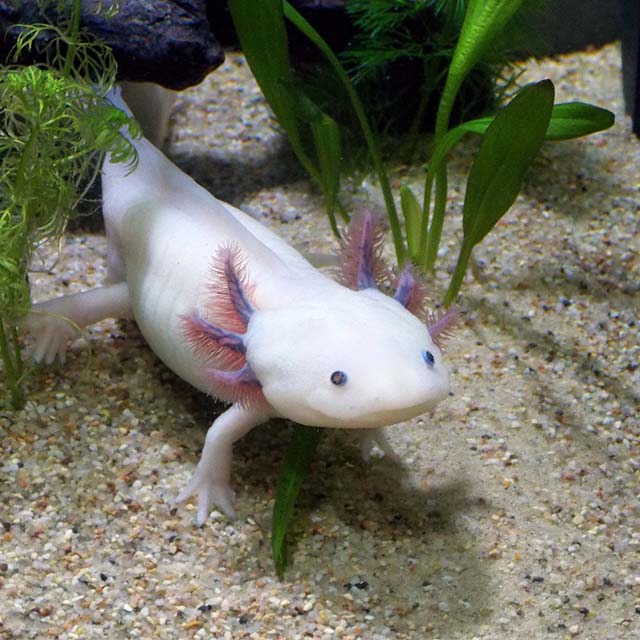info@petprintstudio.com
Comprehensive Guide to Axolotl Pet Care

The axolotl, also referred to as the Mexican walking fish, is a fascinating amphibian that has gained popularity as an exotic pet due to its unique appearance and ability to regenerate lost body parts. Axolotls have captured the hearts of many pet lovers. However, owning an axolotl comes with certain responsibilities to ensure their health and happiness. In this comprehensive guide, we will walk you through all aspects of axolotl pet care, from selecting an appropriate habitat to providing proper nutrition and handling.

Selecting the Right Habitat for your Axolotl

Before bringing home an axolotl, it’s necessary to establish an appropriate environment that closely mimics their natural surroundings.
Container Shape and Size
Axolotls are aquatic creatures that require ample space to swim and explore. A single axolotl needs to have a tank capacity of at least 20 gallons. For each additional axolotl, add another 10 gallons to the tank size. Avoid tall tanks, as axolotls prefer swimming near the surface.
Water Quality and Purification
Maintaining high water quality is essential for the health of your axolotl. Invest in a good filtration system that can handle the waste produced by your pet. Regularly test the water for ammonia, nitrites, and nitrates, and perform water changes as needed to keep the levels within acceptable standards.
Substrate
Select a soft substrate like sand or fine gravel to line the base of the container. Avoid small pebbles or rough substrates that could accidentally be consumed by the axolotl, causing digestive issues.
Temperature and Illumination
Axolotls are cold-water animals, so maintaining a constant temperature between 16°C to 20°C (60°F to 68°F) is important. Use a reliable aquarium heater and avoid exposing the tank to direct sunlight to prevent temperature fluctuations and algae growth.
Water Parameters and Maintenance of your Axolotl

Water Parameters
Frequently monitor and maintain the following water parameters:
- pH level: 7.0 to 8.0
- Ammonia: 0 ppm
- Nitrite: 0 ppm
- Nitrate: Below 40 ppm
Water Changes
Perform partial water changes (about 20% to 25%) each week to maintain water quality. Use a siphon to remove debris from the substrate during water changes.
Tank Cleaning
Clean the tank and decorations occasionally to prevent the buildup of algae and bacteria. Use a soft brush or sponge to gently scrub any algae growth.
Feeding and Nutrition

Diet
Axolotls are meat-eaters and mainly eat live or frozen foods. Their diet can include:
- Earthworms
- Bloodworms
- Daphnia
- Brine shrimp
Offer a variety of food to ensure a balanced diet and supplement occasionally with high-quality axolotl pellets.
Feeding Schedule
Feed your axolotl once a day and remove any leftover food after 15 to 20 minutes to maintain water quality.
Axolotl Health and Common Issues

Signs of a Healthy Axolotl
- Clear and bright eyes
- Smooth, intact skin
- Energetic and active movements
- Strong appetite
Common Health Issues
- Fungi and Bacterial Infections: Caused by poor water quality or injuries. Quarantine affected axolotls and seek vet care.
- Impaction: Ingestion of substrate or gravel leading to obstructions. Use an appropriate substrate and monitor what your axolotl ingests.
- Parasites: Look for unusual behavior and consult a vet if you suspect parasites.
Handling and Communication

Gentle Handling
Axolotls have delicate skin, so when handling them, be gentle and avoid squeezing or applying pressure.
Limited Communication
Axolotls do not require frequent handling and may find it stressful. Limit communication to essential tank maintenance and medical checkups.

Conclusion
With proper care and attention to their unique needs, axolotls can make captivating and long-lived pets. Remember to create an appropriate habitat, maintain water quality, provide a nourishing diet, and handle them with care. Owning an axolotl can be a rewarding experience as you observe these amazing animals thriving in your care. Enjoy the journey of being an axolotl owner!

